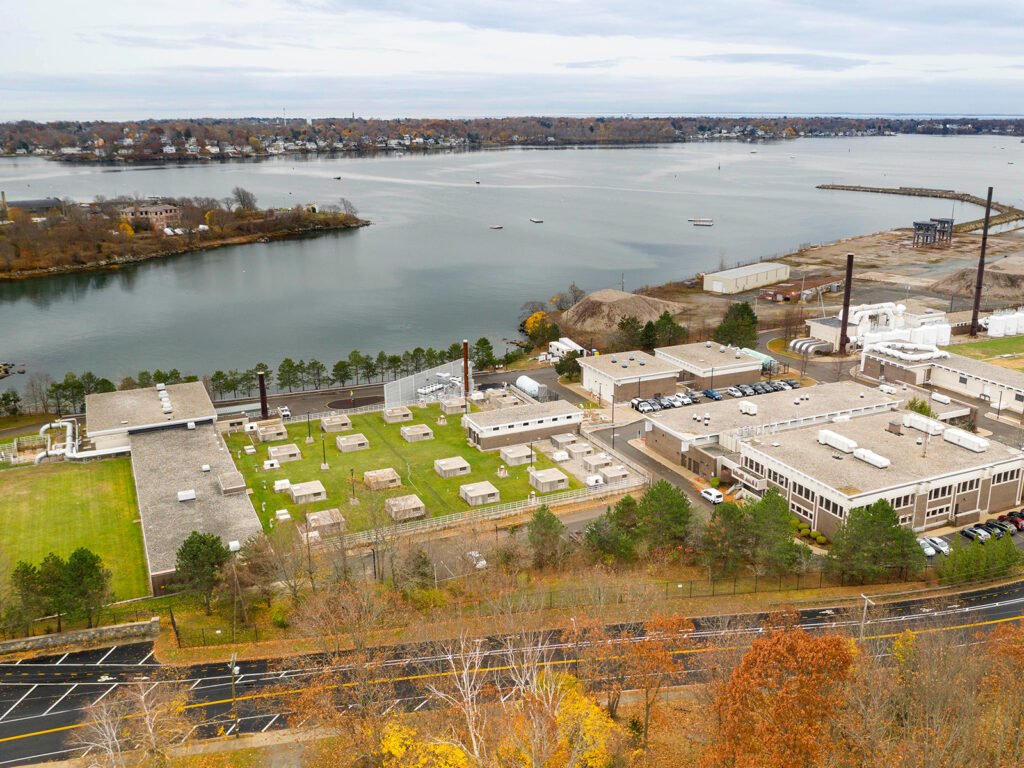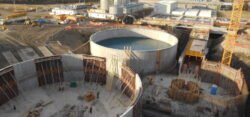South Essex Sewerage District Wastewater Treatment Plant

Introduction
The South Essex Sewerage District (SESD) Wastewater Treatment Plant is a cornerstone of community and environmental health for Massachusetts’ North Shore. Serving the cities of Salem, Peabody, and Beverly, along with the towns of Danvers and Middleton, the plant plays a vital role in ensuring that wastewater is treated efficiently and effectively before being released back into the ecosystem. This article delves into the intricacies of the plant, including its capacity, projects, and community engagement.
Population and Area Served
Encompassing a diverse area along Massachusetts’ scenic North Shore, the SESD Wastewater Treatment Plant serves a population of over 180,000 residents. The cities and towns in this region are both historic and vibrant, with Salem’s rich maritime history, Peabody’s industrial roots, Beverly’s suburban charm, and Danvers’ colonial heritage. Serving such a varied populace requires the plant to be both robust and adaptable, ensuring the wastewater treatment aligns with the diverse needs and evolving demographics of the region.
Wastewater Volume and Treatment Capacity
The SESD plant was originally designed to manage an average daily flow of 30 million gallons per day (MGD) and a peak flow of up to 90 MGD during severe weather events. The facility features an intricate web of primary, secondary, and tertiary treatment stages, each calibrated to optimize the removal of contaminants, thereby ensuring compliance with stringent state and federal environmental regulations.
Primary Treatment
In the initial treatment phase, mechanical screens and grit chambers remove large solids and grit. This reduces the load on subsequent treatment stages and prevents damage to pumps and other mechanical equipment.
Secondary Treatment
In secondary treatment, the facility uses activated sludge processes, where microorganisms are introduced to biologically degrade dissolved organic matter. This phase is critical for reducing biochemical oxygen demand (BOD) and removing harmful chemicals.
Tertiary Treatment
Tertiary treatment includes various advanced processes like filtration, nutrient removal, and disinfection using ultraviolet (UV) light or chlorination. This ensures that the remaining water meets all required quality standards before being released into the ocean, thereby preserving marine and estuarine ecosystems.
Recent Local News
Climate Resilience and Infrastructure Improvements
One of the most pressing challenges for SESD is climate change, which poses risks through rising sea levels, increased precipitation, and extreme weather events. In response, the plant has undertaken significant upgrades to fortify its resilience against these threats. Recent news highlighted the completion of a $20 million renovation project, which included the elevation of critical electrical systems and the installation of new flood barriers.
Renewable Energy Initiatives
The plant is also making strides in aligning itself with sustainable practices. A notable project in 2022 involved the installation of solar panels capable of generating 2 MW of electricity, meeting approximately 20% of the facility’s energy needs. Additionally, a biogas cogeneration system that recycles methane produced during the anaerobic digestion process was inaugurated, further reducing the plant’s carbon footprint and operational costs.
Community Health Initiatives
Given the plant’s importance to public health, SESD has partnered with local universities for research projects aimed at monitoring and improving water quality. For instance, recent studies focus on identifying pharmaceutical compounds and microplastics in wastewater and their impact on both human and environmental health.
Key Projects
Combined Sewer Overflow (CSO) Mitigation
One of the perennial issues for wastewater treatment plants in older urban areas is the existence of Combined Sewer Overflows (CSOs). These are older sewer systems that collect rainwater runoff, domestic sewage, and industrial wastewater in the same pipe. During heavy rainfall, the system can become overloaded, resulting in overflow directly into water bodies. The SESD plant has committed $50 million over the next decade to separate these combined systems, thereby eliminating this risk.
Nutrient Removal Upgrades
Excess nutrients like nitrogen and phosphorus can lead to eutrophication, causing algal blooms that deplete oxygen in water bodies and harm aquatic life. The SESD has initiated a $25 million project to upgrade its nutrient removal process, using advanced technologies such as Membrane Bioreactors (MBRs) and Biological Nutrient Removal (BNR) systems. These upgrades will make the plant one of the most advanced in nutrient management in the region.
Odor Control Measures
Odor control is a significant issue that affects nearby communities, particularly in densely populated areas. The SESD has recently installed new carbon scrubbers and biofilters to control and mitigate odors emanating from the plant. Additionally, closed-circuit cameras equipped with real-time olfactometers monitor specific sections of the plant to identify and address odor issues proactively.
Community Engagement
Public Education Campaigns
A crucial aspect of SESD’s operation is public education and engagement. SESD regularly conducts tours for schools, community groups, and policymakers, emphasizing the importance of wastewater treatment and environmental stewardship. Interactive exhibits, presentations, and Q&A sessions are part of these tours, fostering a sense of shared responsibility among residents.
Stakeholder Workshops
The SESD also conducts stakeholder workshops to discuss ongoing and upcoming projects, allowing community members to voice their concerns and suggestions. These workshops often include detailed briefings on project timelines, potential disruptions, and the expected benefits, thereby maintaining transparency and building trust within the community.
Annual Reports and Newsletters
Regular communication is maintained through annual reports and newsletters, disseminating information about plant performance, compliance with regulatory standards, and future plans. These publications are available both online and in print, ensuring they are accessible to a broad audience.
Social Media and Online Platforms
In today’s digital age, SESD leverages social media platforms like Facebook, Twitter, and Instagram to keep the community informed about plant activities, emergency alerts, and educational tips on water conservation and pollution prevention.
Environmental Stewardship
The SESD Wastewater Treatment Plant is not just a treatment facility; it is a guardian of the local environment. The plant’s initiatives in renewable energy, nutrient removal, and community engagement reflect a commitment to sustainability and the well-being of current and future generations.
Collaborative Efforts
SESD collaborates with local organizations, including the Massachusetts Department of Environmental Protection (MassDEP), the Environmental Protection Agency (EPA), and local non-profits. These partnerships ensure that the plant adheres to the highest standards of environmental protection and public health.
Future Plans
Looking forward, the SESD Wastewater Treatment Plant aims to further integrate innovative technologies like AI and machine learning to optimize plant operations. Pilot programs are already in place to assess the feasibility of smart sensors and predictive analytics in reducing energy consumption and improving treatment efficiency.
Sample Collection and Analysis
The plant has an on-site laboratory where continuous sampling of influent, effluent, and sludge is conducted. This ensures the plant’s processes consistently meet regulatory standards, identifying any deviations that need immediate corrective action.
Conclusion
The South Essex Sewerage District Wastewater Treatment Plant stands as a testament to the community’s commitment to environmental protection and public health. Through advanced treatment processes, sustainable practices, and robust community engagement, SESD continues to evolve and adapt to the needs of the region it serves. As it moves into the future, fortified by resilience strategies and innovative projects, the plant remains a critical infrastructure asset ensuring a cleaner, healthier environment for all.
References
-
- Official SESD Website: Information on projects, treatment processes, and community initiatives.
-
- Massachusetts Department of Environmental Protection (MassDEP): Guidelines and compliance standards.
-
- Local News Outlets: Articles and updates on recent projects and community impact.

